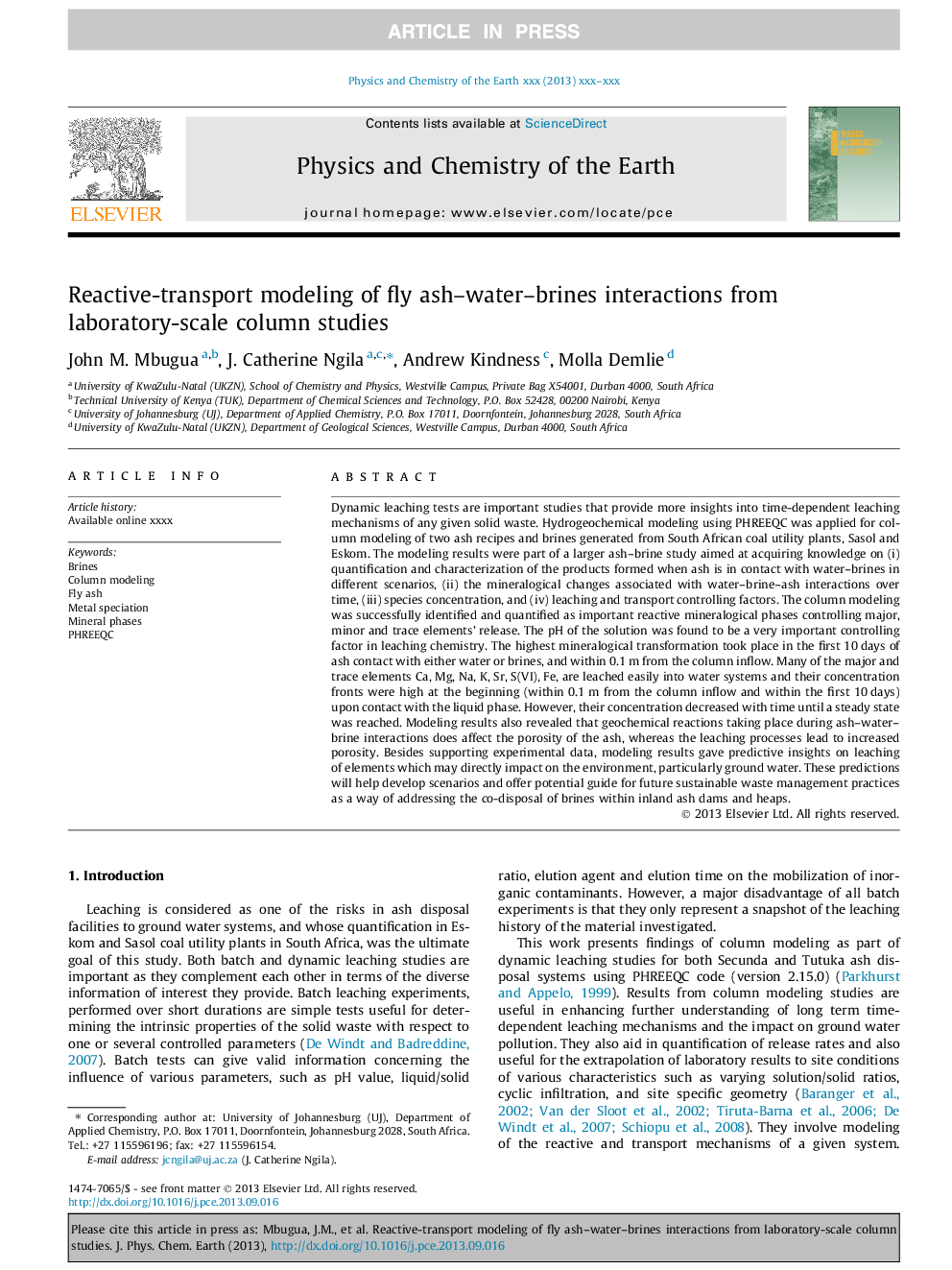| کد مقاله | کد نشریه | سال انتشار | مقاله انگلیسی | نسخه تمام متن |
|---|---|---|---|---|
| 6441999 | 1639356 | 2014 | 8 صفحه PDF | دانلود رایگان |
عنوان انگلیسی مقاله ISI
Reactive-transport modeling of fly ash-water-brines interactions from laboratory-scale column studies
ترجمه فارسی عنوان
مدلسازی واکنش حمل و نقل متابولیسم خاکستر و آب نمکی از مطالعات ستون در مقیاس آزمایشگاهی
دانلود مقاله + سفارش ترجمه
دانلود مقاله ISI انگلیسی
رایگان برای ایرانیان
کلمات کلیدی
موضوعات مرتبط
مهندسی و علوم پایه
علوم زمین و سیارات
ژئوشیمی و پترولوژی
چکیده انگلیسی
Dynamic leaching tests are important studies that provide more insights into time-dependent leaching mechanisms of any given solid waste. Hydrogeochemical modeling using PHREEQC was applied for column modeling of two ash recipes and brines generated from South African coal utility plants, Sasol and Eskom. The modeling results were part of a larger ash-brine study aimed at acquiring knowledge on (i) quantification and characterization of the products formed when ash is in contact with water-brines in different scenarios, (ii) the mineralogical changes associated with water-brine-ash interactions over time, (iii) species concentration, and (iv) leaching and transport controlling factors. The column modeling was successfully identified and quantified as important reactive mineralogical phases controlling major, minor and trace elements' release. The pH of the solution was found to be a very important controlling factor in leaching chemistry. The highest mineralogical transformation took place in the first 10Â days of ash contact with either water or brines, and within 0.1Â m from the column inflow. Many of the major and trace elements Ca, Mg, Na, K, Sr, S(VI), Fe, are leached easily into water systems and their concentration fronts were high at the beginning (within 0.1Â m from the column inflow and within the first 10Â days) upon contact with the liquid phase. However, their concentration decreased with time until a steady state was reached. Modeling results also revealed that geochemical reactions taking place during ash-water-brine interactions does affect the porosity of the ash, whereas the leaching processes lead to increased porosity. Besides supporting experimental data, modeling results gave predictive insights on leaching of elements which may directly impact on the environment, particularly ground water. These predictions will help develop scenarios and offer potential guide for future sustainable waste management practices as a way of addressing the co-disposal of brines within inland ash dams and heaps.
ناشر
Database: Elsevier - ScienceDirect (ساینس دایرکت)
Journal: Physics and Chemistry of the Earth, Parts A/B/C - Volumes 67â69, 2014, Pages 132-139
Journal: Physics and Chemistry of the Earth, Parts A/B/C - Volumes 67â69, 2014, Pages 132-139
نویسندگان
John M. Mbugua, J. Catherine Ngila, Andrew Kindness, Molla Demlie,
